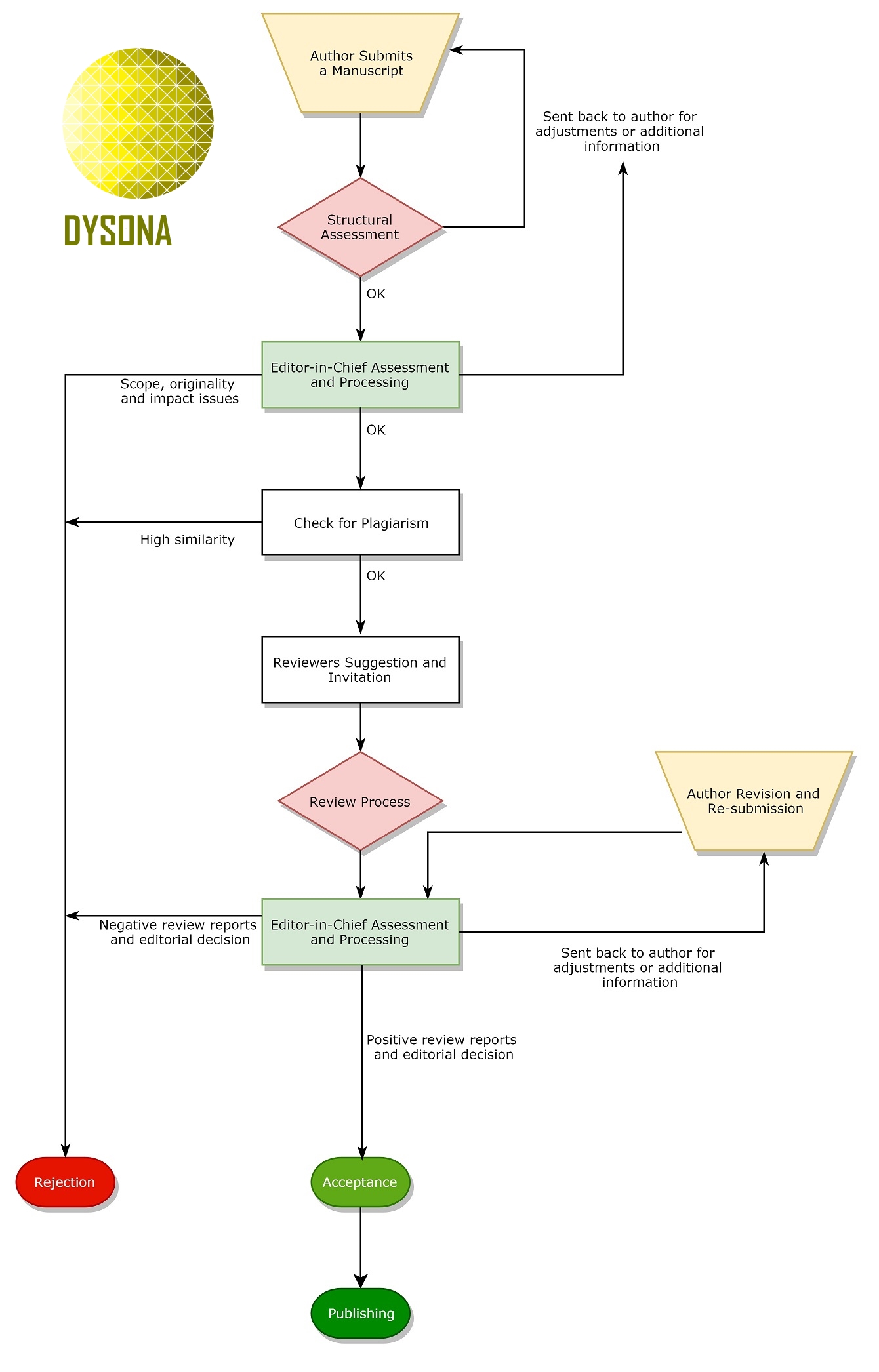


DYSONA - Life Science journal peer review policy is based upon a double-blind peer reviewing system. To be considered, all works should be submitted through our online editorial manuscript management and handling system. Therefore, submitting author should have an account on the system.
1. Submission: this step is carried out by the submitting author through our manuscript submitting system. If the submitting author differs from the corresponding author, a new account for the corresponding author will be made by journal manager so later communications be carried out through our platform.
2. Structural Assessment: The journal director inspects the article in regards to journal guidelines implementation and containing all the needed data and files. In this step the manuscript might be un-submitted and returned to authors to add the lacked material or to imply adjustment in accordance with journal guidelines.
3. Editor-in-Chief Assessment and Processing: The Editor-in-Chief inspects the manuscript in regards of journal scope, originality and impact. Taking into consideration that this is the first quality assessment check point, the article might be rejected or adjustments might be suggested by the editor at this step.
4. Check for Plagiarism: At this step, the manuscript is inspected for plagiarism and depending on similarity check software report; the manuscript is either progressed into review phase or rejected due to similarities. The acceptable similarity percentage is less than 20%.
5. Reviewers Suggestion and Invitation: The editor in chief in this stage can directly send invitations to experts in the field. The editor in chief might also consult more specialized associated editors to nominate reviewers. Invitation procedure continues until two reviewers accept the invitation (the manuscript state is changed to under review). In some cases (advanced methods and delicate case of studies) more reviewers might be invited.
6. First Decision After Review: depending on reviewers evaluation report for the article (additional reviewer might be invited in case of conflict between reviewers’ reports), one of four decisions are to be made by the journal board
This decision is sent to the corresponding author along with reviewers’ reports to help revision procedure or to explain rejection decision.
7. Revision and Re-submission: after a proper revision, the author resubmits the manuscript along with complimentary data if needed. Furthermore, the author should provide a complete report of the new adjustments in light of reviewer’s requests and answers for editor or reviewers’ questions. The author have the right to reject one or more of the revisions, however he/she should provide an explanatory for this rejection or suggest other adjustments.
8- Final Decision: After revisions, final decision is to be made by the journal board. If the revision was satisfactory, the manuscript is accepted and sent for publisher (in case of acceptance in step 6, the manuscript is published directly)
Important points
1- After the initial Editor-in-Chief Assessment and Processing (Step 3), a transfer might be suggested. For more information, kindly read our transfer policy on the Publication Ethics page.
2- For more information regarding editorials and referees' roles and responsibilities, kindly read our Editorial and Reviewers Policy.
3- Steps 5, 6, and 7 (Reviewers' invitation, peer review, and decision after review) can be repeated until a final decision can be made. In this loop, the editor might invite the same original reviewers or add new reviewers depending on the necessities of each manuscript.
4- A minimum of two valid reviews are required to make the first editorial decision after peer review. The subsequent decisions also require two valid reviews unless the previous review round resulted in one or both reviewers deeming the manuscript acceptable. Therefore, receiving a favorable verdict regarding the manuscript from both reviewers is necessary to continue the peer review process.
5- A valid review contains the following
6- All needed instructions to provide a valid review is available in the reviewers' portal upon submitting their review report.
7- After final acceptance, the manuscript will be sent to the production department. After production, the manuscript will be available online, and further adjustments can be made prior to the publication date by contacting the editorial office and following the correction policy (Publication Ethics page).
DYSONA - Life Science journal is published semiannually (two issues a year). However, your accepted manuscripts will be available online directly after acceptance and have a futuristic publishing date of the nearest upcoming periodical issue.